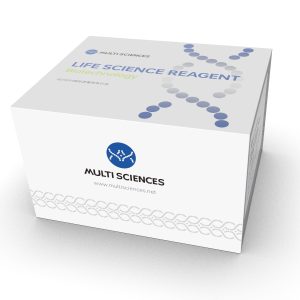HGNC ID: 7098
Target Abstract:
CXC ligand 9(CXCL9), also known as gamma interferon-induced mononuclear factor (MIG), is a small molecular weight cytokine belonging to the CXC chemokine family. It is closely related to two other CXC chemokines, CXCL10 and CXCL11, both of which interact with the chemokine receptor CXCR3 to exert their chemokine function. CXCL9 is involved in Th1 type inflammation and it has many functions, the main one being chemical attraction. Activated B cells, monocytes, CD8+ memory T cells, and CD4+Th1T cells all respond to CXCL9. CXCL9 also promotes the Th1 response by acting as an antagonist of the IL-4/Th2 response, which occurs by blocking the occurrence of Th2-associated chemokines (eotaxin), thereby limiting Th2 infiltration. CXCL9 also exhibits direct antimicrobial activity through its extended C-terminal. In hematopoiesis, CXCL9 is involved in the mobilization and migration of CD34+ stem cells, and inhibits the formation of erythroid and myeloid cell colonies.
CXCL9 Target Infomation Overview
- Target Symbol: CXCL9, C-X-C motif chemokine ligand 9
- Gene Groups: Chemokine ligands
- Alias: SCYB9; Humig; crg-10
- Previous Names: CMK; MIG
- Alias Names: monokine induced by gamma interferon; chemokine (C-X-C motif) ligand 9
CXCL9, C-X-C motif chemokine ligand 9 Target Infomation by Species
- Human
- Mouse
- Rat
Human CXCL9 Target Information
- Target Symbol: CXCL9, C-X-C motif chemokine ligand 9
- Alias:
- C-X-C motif chemokine 9
- chemokine (C-X-C motif) ligand 9
- CMK
- crg-10
- gamma-interferon-induced monokine
- Humig
- MIG
- monokine induced by gamma interferon
- monokine induced by interferon-gamma
- SCYB9
- small-inducible cytokine B9
- NCBI_Gene: 4283
- UniProtKB: Q07325
Human CXCL9 Predicted Functions
Enables CXCR3 chemokine receptor binding activity and chemokine activity. Involved in several processes, including adenylate cyclase-activating G protein-coupled receptor signaling pathway; antimicrobial humoral immune response mediated by antimicrobial peptide; and positive regulation of release of sequestered calcium ion into cytosol. Predicted to be located in extracellular region. Predicted to be active in extracellular space. Biomarker of several diseases, including chronic fatigue syndrome; cystic fibrosis; lung disease (multiple); severe acute respiratory syndrome; and thoracic aortic aneurysm.
Mouse Cxcl9 Target Information
- Target Symbol: Cxcl9, chemokine (C-X-C motif) ligand 9
- Alias:
- BB139920
- CMK
- crg-10
- expressed sequence BB139920
- Mig
- monokine induced by gamma interferon
- Scyb9
- small inducible cytokine B subfamily (Cys-X-Cys), member 9
- NCBI_Gene: 17329
Mouse Cxcl9 Predicted Functions
Predicted to enable CXCR3 chemokine receptor binding activity and chemokine activity. Acts upstream of or within several processes, including defense response to virus; positive regulation of myoblast differentiation; and positive regulation of myoblast fusion. Located in external side of plasma membrane and extracellular space. Is expressed in central nervous system; retina; stomach; testis; and thymus. Orthologous to human CXCL9 (C-X-C motif chemokine ligand 9).
Rat Cxcl9 Target Information
- Target Symbol: Cxcl9, C-X-C motif chemokine ligand 9
- Alias:
- C-X-C motif chemokine 9
- chemokine (C-X-C motif) ligand 9
- MGC105312
- Mig
- monokine induced by gamma interferon
- Scyb9
- small inducible cytokine B9
- NCBI_Gene: 246759
- UniProtKB: Q8K4B1
Rat Cxcl9 Predicted Functions
Predicted to enable CXCR3 chemokine receptor binding activity and chemokine activity. Predicted to be involved in several processes, including cellular response to lipopolysaccharide; neutrophil chemotaxis; and positive regulation of release of sequestered calcium ion into cytosol. Predicted to act upstream of or within several processes, including defense response to virus; positive regulation of myoblast differentiation; and positive regulation of myoblast fusion. Predicted to be located in external side of plasma membrane. Predicted to be active in extracellular space. Orthologous to human CXCL9 (C-X-C motif chemokine ligand 9).

